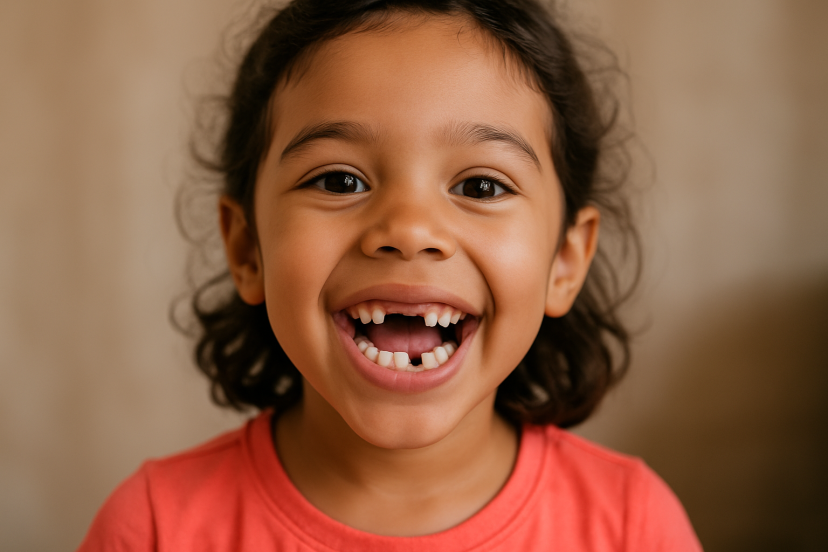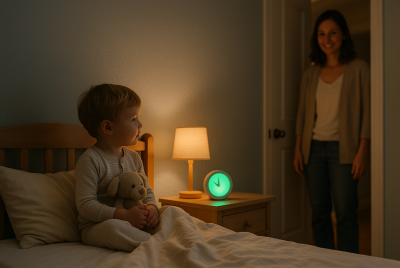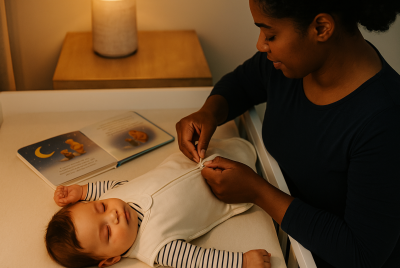When Do Baby Teeth Fall Out? A Parent’s Complete Guide
We may earn a commission for purchases made using our links. Please see our disclosure to learn more.
Watching your child grow is like reading a book you never want to end—every chapter feels both exciting and bittersweet. One of those chapters is when your child’s baby teeth start to wiggle and fall out. If you’re wondering “when do baby teeth fall out?” you’re definitely not alone. This milestone can bring joy, curiosity, and sometimes a little worry.
In this guide, we’ll talk about the timeline of baby teeth falling out, what’s normal (and what’s not), how to care for your child’s teeth during the transition, and even some fun ways to make the Tooth Fairy visits memorable. We’ll also cover expert-backed insights, FAQs, and recommend a few must-have products from Amazon that can make this stage easier.
Understanding Baby Teeth
Baby teeth, also called primary teeth, usually start appearing around 6 months of age. They allow your little one to bite and chew food, develop clear speech, and keep room open for the adult teeth that will come in later. But eventually, those little pearly whites need to move aside.
When Children Usually Start Losing Baby Teeth
Children often begin shedding their first baby teeth around ages 6 to 7, and the process typically wraps up by 12 or 13, when the final molars emerge.
Typical Pattern of Tooth Loss in Kids
The sequence follows a pattern—teeth usually loosen and fall out in the same order they first appeared.
- Children usually lose their lower front teeth (central incisors) before any others.
- Upper central incisors: next in line.
- Lateral incisors, canines, molars: follow gradually.
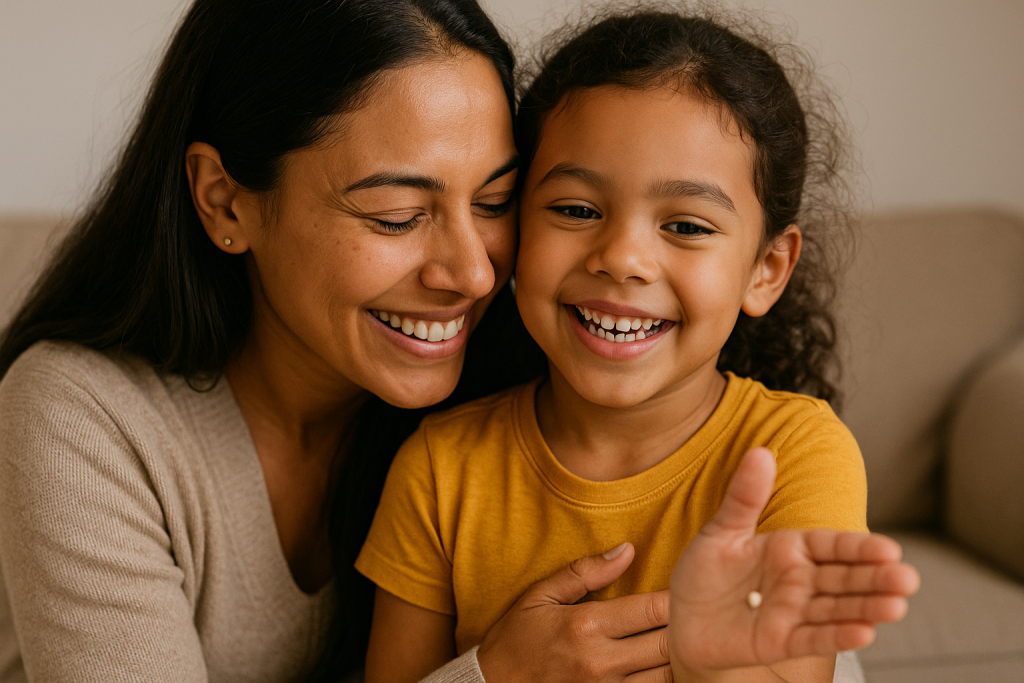
What Happens If a Child Loses Teeth Early?
Sometimes teeth loosen earlier due to injury, decay, or genetics. A little ahead of schedule is usually fine, but check with a dentist if:
- A tooth falls out before age 4.
- Permanent teeth don’t appear after several months.
- There’s swelling, pain, or discoloration.
What If Baby Teeth Don’t Fall Out?
If a tooth hasn’t budged by age 7 or 8, it may be due to:
- A permanent tooth growing in the wrong position.
- A tooth fused to the bone (ankylosis).
- Genetics or medical conditions.
In these cases, a pediatric dentist can recommend next steps.
How Soon After Baby Teeth Fall Out Do Adult Teeth Appear?
After a baby tooth falls out, a permanent tooth usually appears within 6 months. But every child is different—some teeth take longer, and that’s often okay.
Signs Your Child Is About to Lose a Tooth
Look out for:
- Increased wiggle or looseness.
- Gaps forming.
- Sore gums or sensitivity when chewing.
Helping Your Child Handle Loose Teeth
- Encourage gentle wiggling with clean fingers.
- Avoid force—pulling too soon can hurt and cause bleeding.
- Offer soft foods if chewing feels uncomfortable.
Oral Care Tips During the Transition
- Brush twice a day with a soft-bristled toothbrush.
- Floss gently around loose teeth.
- Visit the dentist every 6 months.
The Emotional Side of Losing Teeth
For kids, losing teeth can feel exciting (“The Tooth Fairy is coming!”) or scary (“Will it hurt?”). Reassure your child by sharing your own stories or making it a celebration.
Cultural Traditions Around Losing Teeth
Not every family has a Tooth Fairy. In some cultures:
- Children toss teeth on the roof for good luck.
- Teeth are buried near plants for strong growth.
- A small gift or coin is given in exchange.
Fun Tooth Fairy Ideas
- Leave glitter “fairy dust” on the pillow.
- Add a short, magical letter from the Tooth Fairy.
- Create a keepsake box for all the teeth.
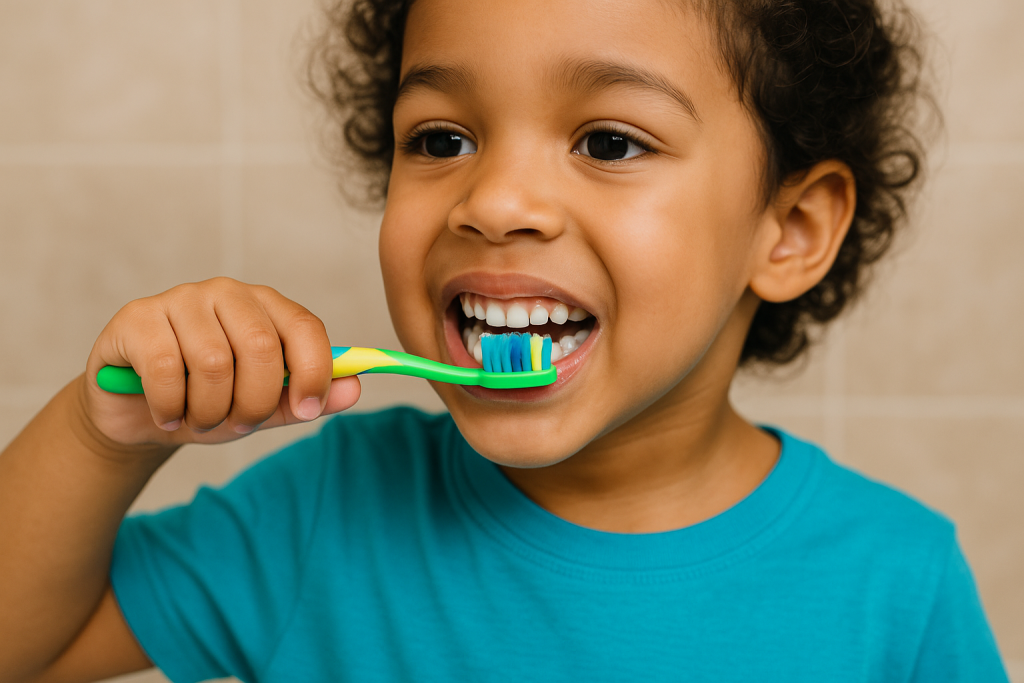
🛒 Amazon Picks for Parents
Here are five parent-approved products to make this milestone smoother:
1. Tooth Fairy Keepsake Box
- Safe, organized storage for lost teeth.
- Cute compartments for each tooth.
Pros: Durable, fun design.
Cons: Small compartments for some teeth.
Use Case: Perfect for keepsake lovers.
2. Colgate Kids Battery Powered Toothbrush
- Gentle cleaning for kids transitioning to permanent teeth.
- Soft bristles and fun colors.
Pros: Encourages brushing independence.
Cons: Needs replacement heads.
Use Case: Great for daily oral care.
3. TheraBreath for Kids Oral Rinse
- Dentist-formulated, alcohol-free.
- Helps prevent cavities while keeping breath fresh.
Pros: Kid-friendly taste.
Cons: Pricier than regular rinses.
Use Case: Boost oral hygiene during wiggly tooth phase.
4. GUM Soft Flossers for Kids
- Small size for little hands.
- Gentle on sensitive gums.
Pros: Easy to use.
Cons: Single-use plastic.
Use Case: Builds healthy flossing habits early.
5. Tooth Fairy Pillow with Pocket
- Fun way to hold a tooth and get a surprise.
- Comes in various designs.
Pros: Makes the Tooth Fairy tradition magical.
Cons: Needs regular washing.
Use Case: Perfect for excited first-time tooth losers.
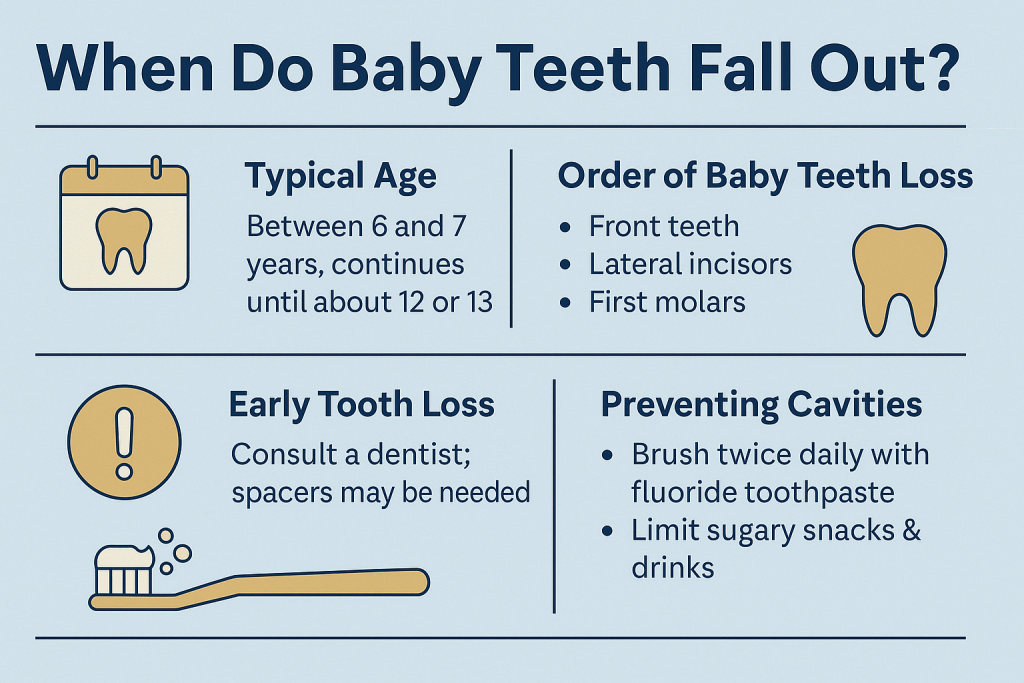
Product Comparison Table
| Product | Best For | Pros | Cons |
| Munchkin Keepsake Box | Saving memories | Cute, durable | Small slots |
| Colgate Kids Toothbrush | Daily brushing | Fun, easy | Needs refills |
| TheraBreath Rinse | Fresh breath | Dentist-approved | Expensive |
| GUM Flossers | Oral hygiene | Easy to use | Plastic waste |
| Tooth Fairy Pillow | Celebrations | Fun tradition | Needs wash |
🧪 Research-Backed Insights
A study published in the Journal of Dentistry for Children highlights that most kids lose their first tooth at age 6, with slight variations depending on genetics and nutrition. Read more in this research summary on dental milestones.
Another review in the American Academy of Pediatric Dentistry emphasizes the importance of maintaining oral hygiene during the transition period to prevent cavities in permanent teeth. Learn more from this expert review on children’s oral health.
FAQs
When do baby teeth usually fall out?
Most kids start around age 6 and finish by age 12 or 13.
Can losing baby teeth cause pain?
Yes, mild soreness is common, but it usually passes quickly.
What if my child’s baby tooth won’t budge?
A dentist may need to help if the permanent tooth is blocked.
Is There a Usual Sequence for Baby Teeth to Fall Out?
Not always, but typically they follow the order they came in.
Is It Worth Keeping My Child’s Baby Teeth?
Many parents do for sentimental reasons. Keepsake boxes make it easy.
Helpful Resource
If you’re also navigating crib safety and early childhood care, check out this guide on choosing the right crib pads.
Conclusion
So, at what age do children start losing baby teeth? Usually between ages 6 and 12, in a predictable order, though every child has their own pace. The key is to keep up with good dental care, encourage healthy habits, and make the process fun and reassuring. Remember, this stage is more than just teeth—it’s about growth, confidence, and creating sweet memories together.

